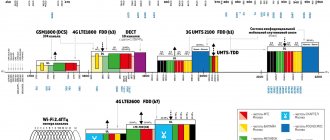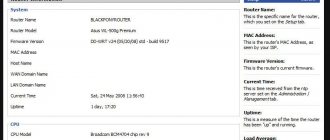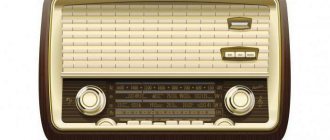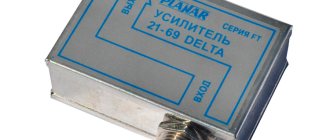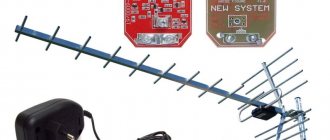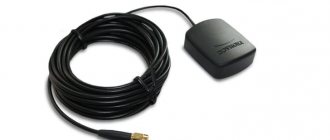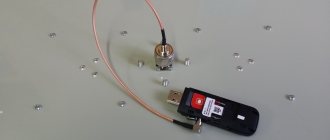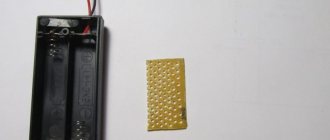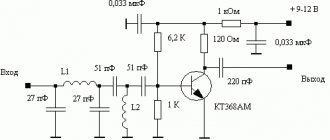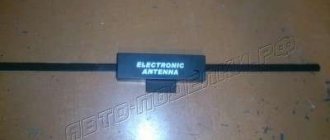For a long time now we can’t imagine our life without our favorite TV shows and films. Therefore, the TV in the apartment of a modern person is the main gadget. To access television outside the city (for example, in a country house), you need a satellite dish. This device is designed to watch a wide range of TV channels in digital and HD quality. There are also regular television antennas that receive and broadcast digital terrestrial TV. However, sometimes the signal strength is not enough and the image on the TV screen is broadcast with interference.
What factors influence the deterioration of a TV signal?
The reasons for interference in broadcasting may be different. The most common of them:
- distance of the TV from the repeater;
- unsuitable TV antenna;
- a large amount of noise within the antenna radius;
- physical obstacles to signal transmission (high-rise buildings, trees, industrial buildings);
- non-working condition of the cable;
- incorrect orientation of the transmitter;
- metal structures near the antenna;
- signal distribution to several receivers;
- outdated technology.
What is an antenna amplifier?
Antenna amplifiers are devices that enhance the quality of a television or radio signal, as well as reduce all kinds of interference. They increase the range of the signal, bringing the broadcast “picture” to maximum quality. Amplifiers are necessary for residents of both suburbs and metropolitan areas: for example, when the television tower is located at a distance or there are many high-rise buildings around the house that create obstacles.
REFERENCE: Thanks to the shape and design of the antenna, it receives a clearer signal from one, maximum two directions.
Classification of TV amplifiers
Amplifiers are divided into types:
- Mast. Those that are attached to the mast itself. Power is supplied to them via a coaxial cable. But this is precisely why such amplifiers do not last long, they can fail during a thunderstorm and lose quality due to oxidation of contacts. Mast amplifiers usually work for a couple of years.
- Internal. These are more convenient because they are located next to the receiver. True, signal losses still occur through the cable.
Models for analog signal amplification
Modern radio technology devices can solve the problem of poor quality “picture” on your TV screen. Such devices have many advantages and allow you to eliminate interference yourself. It is important to make the right choice when combining the operation of the antenna and amplifier.
- Televes 5523.
Manufacturer from Italy, which provides amplifiers with five outputs. In addition, it has a fairly large amplifier coefficient - 16 dB, which significantly reduces noise and interference. The device operates via a separate power supply.
- Terra HA123.
This model is perfect for cottages or high-rise buildings, as it increases the signal by a factor of 28 dB and operates at various frequencies.
And finally, the most complex antenna for digital TV that you can make yourself
The log-periodic circuit allows you to get maximum gain without additional circuits.
Note:
This type of antenna requires careful orientation towards the TV tower.
Can be used with a screen that helps strengthen a weak signal.
Making a homemade antenna is not just about saving money. This is an excellent opportunity to practice radio engineering, without the risk of damaging expensive radio elements and materials. And if your receiving point is located in an unfavorable location, you can always try a different configuration without buying several factory-made antennas.
Expert opinion
Viktor Pavlovich Strebizh, lighting and electrical expert
Any questions ask me, I will help!
Before making an antenna out of beer cans, make sure that there are no high-rise buildings between the television center and the reception point that could block the signal. If there is something you don’t understand, write to me!
Models for amplification of terrestrial and satellite signals
- Gecen A05-20.
Such an amplifier raises the signal coefficient to 19-21 dB. It operates in the frequency range for satellite television broadcasting 950-2400 MHz, terrestrial - 5-950 MHz. However, for greater effect, you may need a separate power supply.
- Polish amplifiers of the SWA series.
These models are mounted on “array” antennas and amplify the signal frequency in the range from 49 to 790 MHz.
They are installed mainly on antenna “arrays” and have different amplification coefficients. The frequency range varies from 49 to 790 megahertz. The supply voltage is 9 volts. Installation is carried out using a stud or threaded connection.
Recommendations for selection
So, how to strengthen the digital television signal? First you need to choose a good amplifier that will work in a particular case.
To begin with, find out in what range the broadcast is made in your region: it can be meter and decimeter. In the first case, the maximum frequency is 300 MHz, and in the second – 3 Hz.
Amplifiers are single-range, i.e. work only in one mode, and are universal with a switch. This is the main indicator that you should pay attention to.
However, it is also recommended to study the following:
- Reception range. The minimum range is 30 km, but 150 is better! The indicator indicates the distance between your receiver and the repeater point. It makes no sense to put everything below 30 km, because... there will be almost no effect. Anything more is wasteful, because... Such amplifiers are expensive.
- Reception gain factor. How to improve the signal? Of course, you need to look at how much the amplifier can increase reception. The rule here is: “The further away the repeater, the higher the coefficient.” For a distance of 50 km, a gain of 27 dB is sufficient, i.e. ratio: 1 dB at 1.85 km.
- Nutrition. Some models are powered by a power supply, others by a receiver. According to customer reviews, the first models work better. On the other hand, the latter are much more convenient, because You just need a long USB cable.
- Frame. Depends on the installation location. Models with a plastic body are suitable for indoor use, and metal ones for outdoor use.
TOP 4 good amplifier
1 Model SWA9001/999/9701 (L) broadband. A good broadband amplifier without adjustment. Suitable for both home installation and mast installation. It is recommended to install an additional metal screen. Capable of picking up a signal up to 100 km.
2 Televes. A good 5-output Italian amplifier with a gain of 15 dB. The signal increase is not very large, but excellent noise reduction is provided. Powered by the included power supply.
3 Gecen A05-02. Satellite and digital amplifier operating in both the meter and decimeter range. It is powered via a coaxial cable, which is not very good, but there is no need to purchase an additional power supply or USB.
4 RTM LNA02. An excellent model with a gain of 20 dB. It has excellent noise reduction and is powered by the receiver. Well suited for broadcast-restricted areas.
How to strengthen an indoor antenna
A few tips to help you get a clear picture on your TV screen:
- move the antenna and point it towards the television tower;
- supplement the antenna with a signal amplifier;
- increase the number of antennas and install them at the highest possible height;
- change the TV antenna to a more powerful one;
- remove all metal objects that interfere with signal reception;
- check the functionality of the cable, the absence of breaks, etc.;
- create the effect of a common-mode antenna array (CAR).
How to choose an antenna amplifier
The choice of antenna amplifier affects the entire operation of the antenna, so vigilance and some knowledge are also required here. When choosing a device, it is important to consider a number of factors:
- Frequency range.
- The distance from the amplifier to the repeater should vary from 10 to 150 km.
- The signal level at the output of the device should be approximately 100 dB per microvolt.
- The gain of the device must be at least 40 dB.
- It is important to know what type of device is receiving the TV signal.
- The noise figure should not exceed 3 dB.
- Current consumption is preferably within the range of 30-60 mA.
- The location of the amplifier and its distance from the TV.
To enhance or not
The task of the amplifier is to make sure that the level of the television signal passed from the antenna through the cable to the TV receiver becomes sufficient for the tuner to operate. Therefore, it is only necessary when the pulse power is too low.
For it to work correctly, 2 simple conditions are enough:
- presence of signal;
- proper operation of the antenna and cable.
But in the following cases, the amplifier may be harmful:
- The antenna receives a TV signal of sufficient power. Due to the specifics of the DVB-T2 standard, overamplification will lead to “artifacts” (for example, the overlapping of several programs on one another on one channel).
- The antenna receives the TV signal too poorly. To amplify, you need a high-quality original, otherwise the device will not work. There is no point in increasing the noise power.
For proper reception you need a good outdoor (or powerful indoor) antenna. There is no point in purchasing an amplifier for low-power “two sticks” or “wire loops”.
Connecting the amplifier to the antenna
An antenna amplifier is a small electrical circuit. If the antenna is already connected, then with a few bolts the necessary device is attached to its mast between the matching device and the feeder. If you do not have special equipment, then to check the effect of the work done, simply turn on the TV. If the antenna is still not installed, then it will be faster and more efficient to call a specialist.
Way out
A signal booster will help improve the picture and perhaps pick up a few extra channels.
The antenna amplifier can be purchased separately as an additional device. There are also antenna amplifiers for TVs with a built-in amplifier. Such an antenna is called active. It performs two functions at once - it detects and amplifies the signal. But it also has a drawback, especially for windy areas - the design is quite weak. That is, with frequent strong gusts of wind, it will quickly fail, and replacing the reinforcing element on it will be quite difficult. Since such antennas are mounted as high as possible, access to them is quite problematic.
